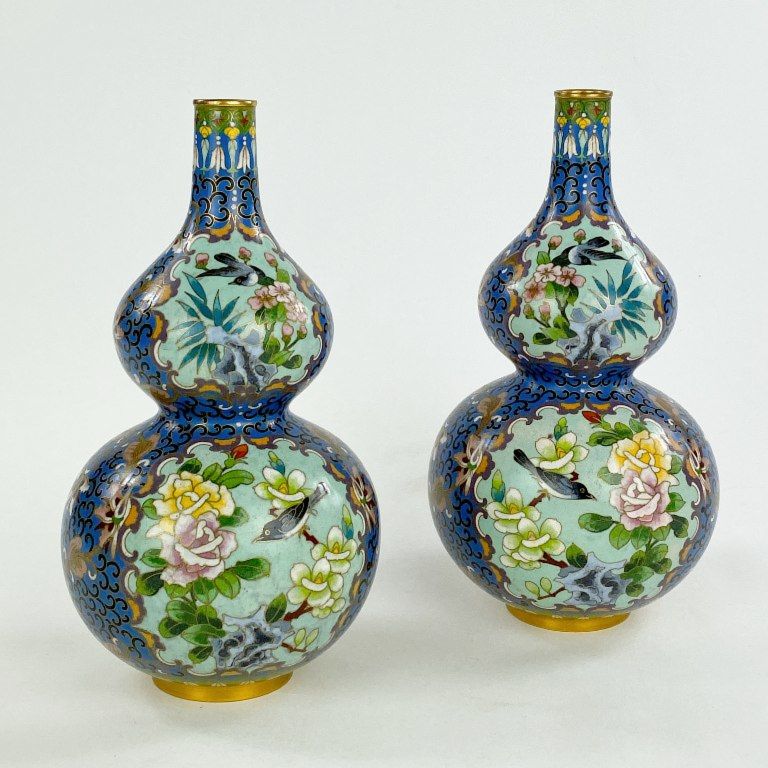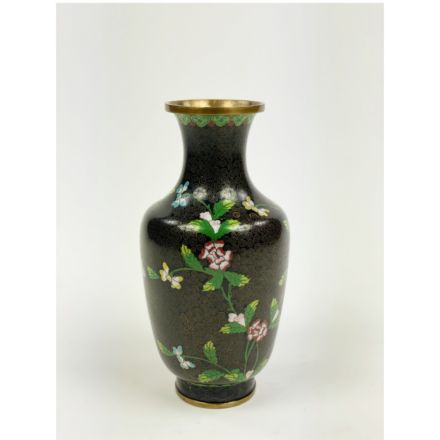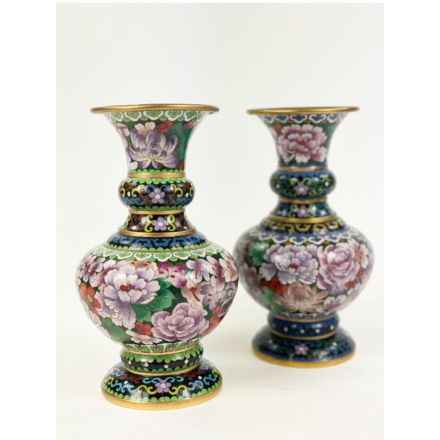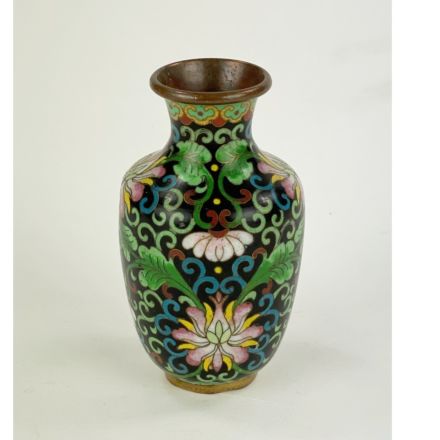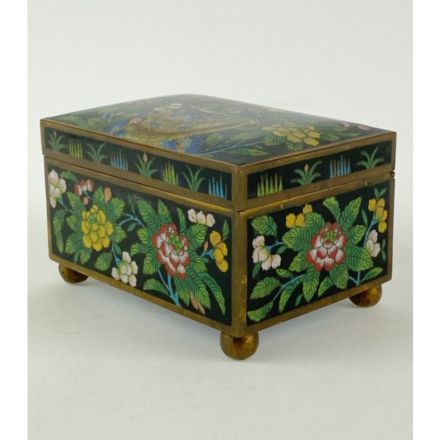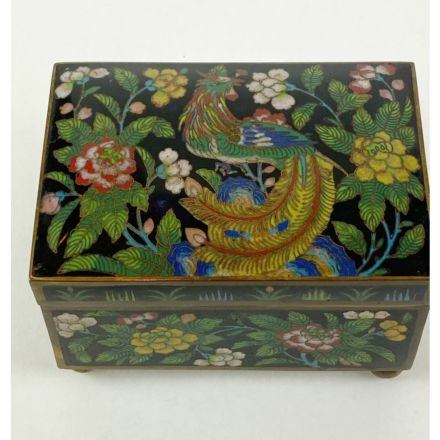Pair of cloissonné vases
Pair of gourd-shaped cloisonné vases with a refined decor of flowers and birds
The technique of cloisonné enamel, also known as cellular enamel, is a very old method of decorating objects and probably originates from the Near East. The term is derived from the French word cloison (dividing wall). On a (usually gold) background, narrow strips of crushed wire are soldered with the narrow side facing upwards. By having the strips cross each other, compartments are created. These so-called cells are each filled with enamel powder in different colours. Then the whole object is heated so that the powder melts into glass. The strips prevent the various enamels from flowing into each other. Moreover, this network of gold threads also forms the outline lines in the drawing. If the various enamel powders have approximately the same melting point, the object can be enamelled in this way in one go. If this is not the case then the object has to be heated in several steps, starting with the enamel with the highest melting point. As enamel is slightly embedded during melting, each cell often needs to be coated with a second layer of enamel. After this the strips are smoothed to the level of the enamel. Finally, the whole is polished. In China and Japan the object is then polished until no wire protrudes above the enamel.
This form of art was already used in the 5th century BC and was widely used in Byzantine architecture. Nowadays China is the most important production country.
| Width | 15 cm |
|---|---|
| Height | 26 cm |

